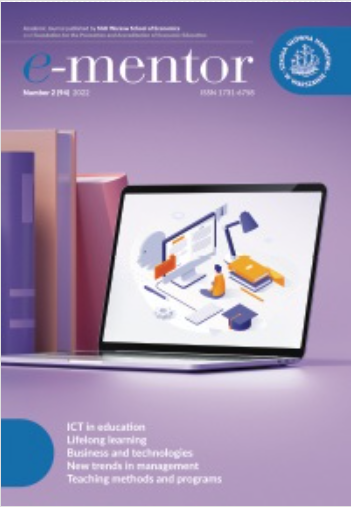Addressing students' perceived value with the virtual university concept
Addressing students' perceived value with the virtual university concept
Author(s): Ryszard Ćwiertniak, Przemysław Stach, Katarzyna Kowalska-Jarnot, Karolina Worytkiewicz-Raś, Barbara Wachułka-KościuszkoSubject(s): Higher Education
Published by: Szkoła Główna Handlowa w Warszawie, Fundacja Promocji i Akredytacji Kierunków Ekonomicznych
Keywords: virtual university concept; perceived value; distance learning; e-learning; Higher Education Institution (HEI)
Summary/Abstract: Since the beginning of the COVID-19 pandemic, digital transformation has significantly accelerated in many industries, including somewhat slow-changing higher education. The epidemic situation pushed students, faculties, and administrators to experiment to a much greater degree with online classes, digital cooperation, and virtual student services. For the majority of the academic community, this situation created a completely new reality. Indeed, the digital experience in higher education was for some community members quite challenging, if not traumatic. Fairly soon, however, the digital experiment proved successful in many areas. In some cases, even more effective than conservative practices. The Virtual University Concept (VUC) has been a topic of debate for quite some time, but only now has it found a receptive audience in all sectors of the academic community. In the following articles, the authors will attempt to conceptualize the virtual university as an innovative way to address contemporary challenges for Higher Education Institutions (HEI), specifically their ability to identify, create and capture value for students. The concept of the VUC is grounded in a literature review, the professional experience of the authors, as well as the student survey, which was conducted in one of Cracow’s private colleges. The authors have listed fundamental areas of focus that need to be addressed before attempting to model the VUC. They include the technical and technological capacity of a HEI, faculty development, cost management, innovation, and students' and employers' value perceptions. All this must be done with the goal of providing value to key stakeholders at a reasonable cost. All the authors' inquiry streams seem to suggest that if well designed and implemented, the VUC can be a source of significant value to students and therefore should be considered in HEI expansion and turnaround strategies.
Journal: e-mentor
- Issue Year: 94/2022
- Issue No: 2
- Page Range: 65-76
- Page Count: 11
- Language: English

